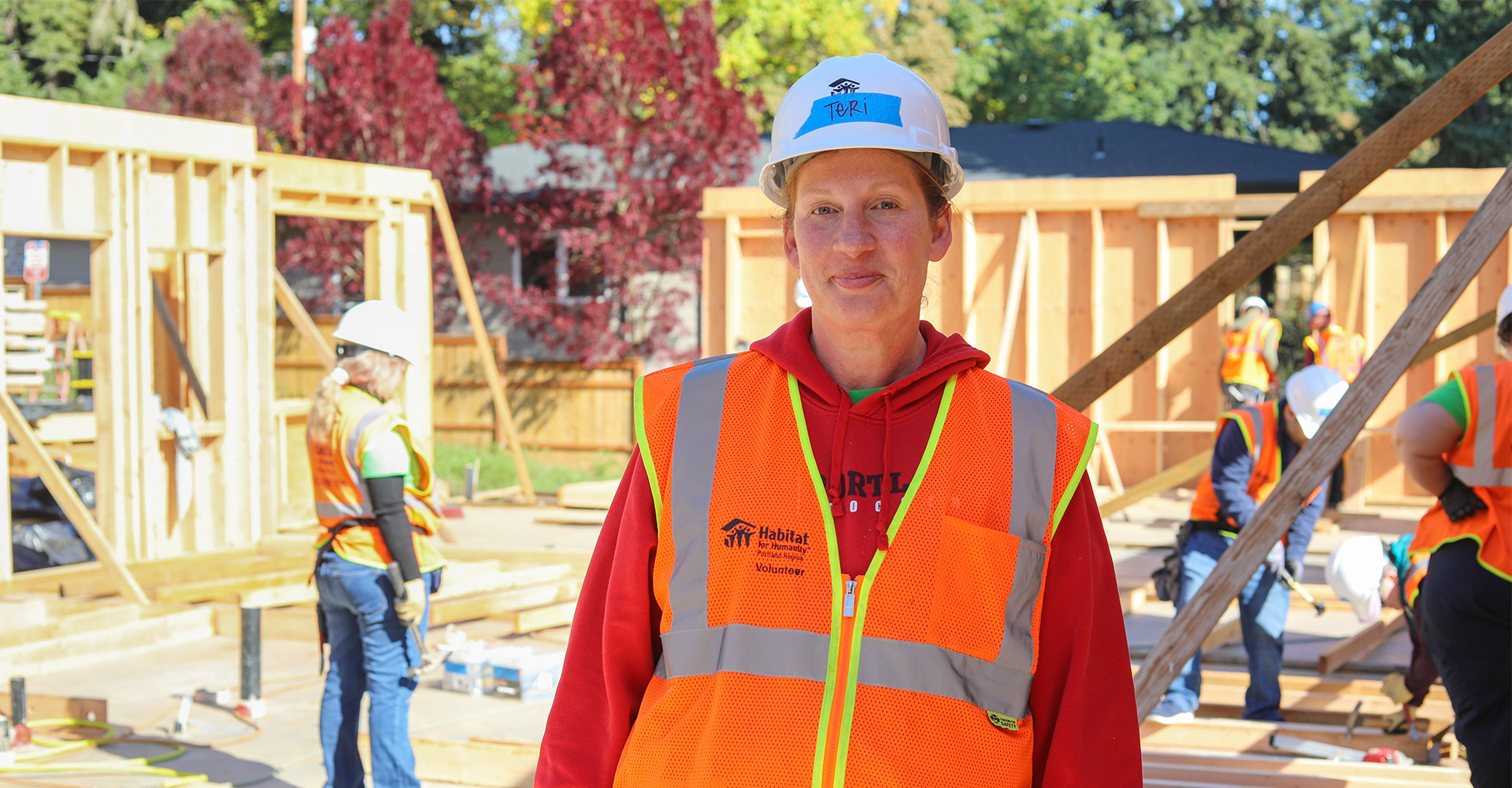
We’ve heard it countless times: It takes money to make money. Buying a home takes a down payment, launching a business means start-up capital, going to college requires advanced tuition. These investments are cornerstones to creating economic stability and building generational wealth, but not everyone is able to unlock those opportunities.
For many Oregonians, Individual Development Accounts hold the key.
Individual Development Accounts, or IDAs, are matched savings accounts packaged with financial education and counseling, and specified asset-building goals, such as buying a home, starting a business, or going to college. They have been applied in varying forms across the United States for decades to stimulate personal investments and build wealth for underserved populations. The Oregon IDA Initiative was launched in 1999 and has helped more than 17,000 Oregonians, particularly people of color who have been systemically excluded from asset-building opportunities, invest in their financial wellbeing, and build wealth for future generations.
Statewide, the IDA Initiative enrolls approximately 4,300 savers per year, typically on two-to three-year timelines, with accounts matched by as much as $5 for every $1 saved up to a set maximum. The program predominately serves people with incomes below 80% of the area median, and in recent years, Black, Indigenous, Asian/Pacific Islander, and Latinx populations comprised about half of those participating.
Down payment assistance for a first-time homebuyer is among the most common objectives for IDAs, which are recognized as a pivotal asset to closing the racial homeownership gap by the state’s Joint Task Force on Addressing Racial Disparities in Home Ownership.
But the limit on the tax credits that fund these accounts — capped at $7.5 million since 2009 — means the IDA program is falling short of its potential, nearly $40 million and 3,200 savers short, according to a 2022 report based on the waitlist for IDAs in Oregon. Without legislative action in 2024, the IDA Initiative says it will shrink to only 1,600 families during this biennium, fewer than at any point in the past 12 years.
“There is more demand than what money we have,” said Cecelia Lente, IDA coordinator with the Native American Youth and Family Center, or NAYA. “Every year, that’s the case.”
NAYA is one of 12 fiduciary organizations that administer the program with more than 70 partner organizations across the state, along with CASA of Oregon, The Immigration and Refugee Community Organization, and Habitat for Humanity Oregon, among others. The nonprofit Neighborhood Partnerships manages the state’s IDA program.
These organizations, and dozens of other service providers, local governments, community development corporations, business interests and advocates, are members of the Oregon Housing Alliance, which is calling on lawmakers to take action to secure immediate funding for the IDA program.
Both Oregon Sen. Kayse Jama, D-Portland, and Rep. Ricki Ruiz, D-Gresham, are expected to introduce bills calling for $10 million in funding for IDAs. Ruiz knows personally the impact this program can have.
During the height of the pandemic, Ruiz and his wife enrolled in an IDA with the goal to buy a home of their own. Over the course of 18 months, they received financial training and support to stay on tract. In return, the program provider matched their savings, resulting in $9,000 to put toward a down payment.
Last year, Ruiz and his wife, who both grew up in rental housing, bought their first home using their IDA down payment. He said he already sees the difference homeownership has made for his daughter, who now has room to grow within the comfort of a stable home, a childhood experience he said he and his wife never had.
“On my side of the family, this is the first time we’ve owned a home in the United States,” Ruiz told Habitat. Owning a home, he said, means setting up the next generation for success.
“Whether it’s my daughter, or my future kids, whether they live in the house, or they want to sell it, that’s something they have at their disposal, to do whatever they decide for their future,” he said. “For us, it’s a long-term investment, a generational investment that my family didn’t have the chance to make. And we’re doing it thanks to these programs that exist.”
Family economic well-being does not come solely from income, spending or consumption, but instead requires savings, investment and the accumulation of assets.
Oregon IDA Initiative Vision
It is appropriate for the state to institute an asset-based antipoverty strategy.
Investment through an individual development account system will help lower-income households obtain the assets they need to succeed. Communities and this state will experience resultant economic and social benefits accruing from the promotion of the financial stability and resilience of lower-income households.
Building generational wealth and stability
Yesika Arévalo’s parents were among the first to enroll in the program when it launched in 1999. They used an IDA to generate a downpayment to purchase their home in 2000. Arévalo used an IDA to purchase her own home in 2012.
“Before I purchased my house, I was moving every year, trying to find affordable rentals,” she said. That has changed since she’s been able to secure affordable housing, which has meant she’s been able to focus on her professional growth, her cultural enrichment, and her children’s future. Now her daughter is applying for an IDA to save for college.
“I’ve been able to provide for my children for the past 10 years,” Arévalo said. “They didn’t have to switch schools, and I’ve been able to have the stability that I have.”
Helping her parents through the IDA process was one of the reasons Arévalo pursued a career in the housing education field. Today she helps others use IDAs as the homeownership program manager for Proud Ground, a Portland-based nonprofit that creates permanent affordable homeownership opportunities.
“When my parents began the program, they had never kept a budget in their life,” Arévalo said. “I saw the change in their habits, and I’ve also seen those same changes time and time again with our participants in the program as well.”
Decades of disparity in income and homeownership rates has meant people of color often do not have the same resources or networks to tap into to invest in asset-building ventures, Arévalo said.
“Savings for families who are low income and living paycheck to paycheck, it is very difficult,” Arévalo said. “What the assets these families are creating, they are not just creating wealth, they are creating security for their families.”
Recommendations for State Lawmakers
The state’s Joint Task Force Addressing Racial Disparities in Home Ownership identifies IDAs as a key in helping bridge the economic and housing gap for Oregonians of color, particularly Black Oregonians, which have the lowest rate of homeownership — nearly 30 percent below their White counterparts.
To counteract this disparity, the Task Force has recommended state lawmakers create a sustainable funding source for IDAs, preferably by reforming the state’s mortgage interest deduction laws.
The mortgage interest tax deduction allows tax filers to reduce their taxable income by the amount of interest paid on mortgage debt, including on a second residence, and as such is skewed to benefit more affluent homeowners. The Oregon Department of Revenue forecasts this deduction will cost the state more than $900 million in the 2023-2025 biennium and has topped $1 billion in years past. It is the state’s largest housing subsidy, with 60% of the subsidy going to the highest-earning 20% of Oregonians.
The IDA Initiative has been in a flat funding cycle with the tax credit capped at $7.5 million since 2009, despite adding providers, assets, and program innovations to better reach underserved communities. In 2020 and 2021, the program received additional one-time, General Fund allocations from the Legislative Assembly, totaling $9 million. In this past legislative session, however, the recommendation to eliminate the deduction on second homes only, and direct that revenue to funding IDAs, did not reach a floor vote. Nor did lawmakers approve any additional allocations from the state’s General Fund.
The General Fund currently has a $375 million projected surplus, and Ruiz called the $10 million request a drop in the bucket that will have a tremendous impact.
“This is such a great investment. It’s such a great program,” Ruiz said. “This is a no brainer.”
The larger goal is a secure, ongoing funding stream to provide continuity, and to address unmet demand among communities of color throughout the state. William Miller, government affairs manager with NAYA Family Center, which administers IDAs, is among those calling for an ongoing funding stream.
“Moving forward, we have to be creative about long term sustainable funding,” Miller said. “It comes down to building opportunities to break cycles of poverty and sustain intergenerational wealth. By doing that, and by continuing to use our voice and advocating for sustainable funding mechanisms, the more we’ll continue to see family, individuals, and families uprooted out of systems of poverty and into a system that allows them not to just survive, but to thrive. I think that’s really the crux of what we’re working with — the potential of helping eradicate systems of poverty.”
The Oregon State Legislature convenes on Feb. 5.


